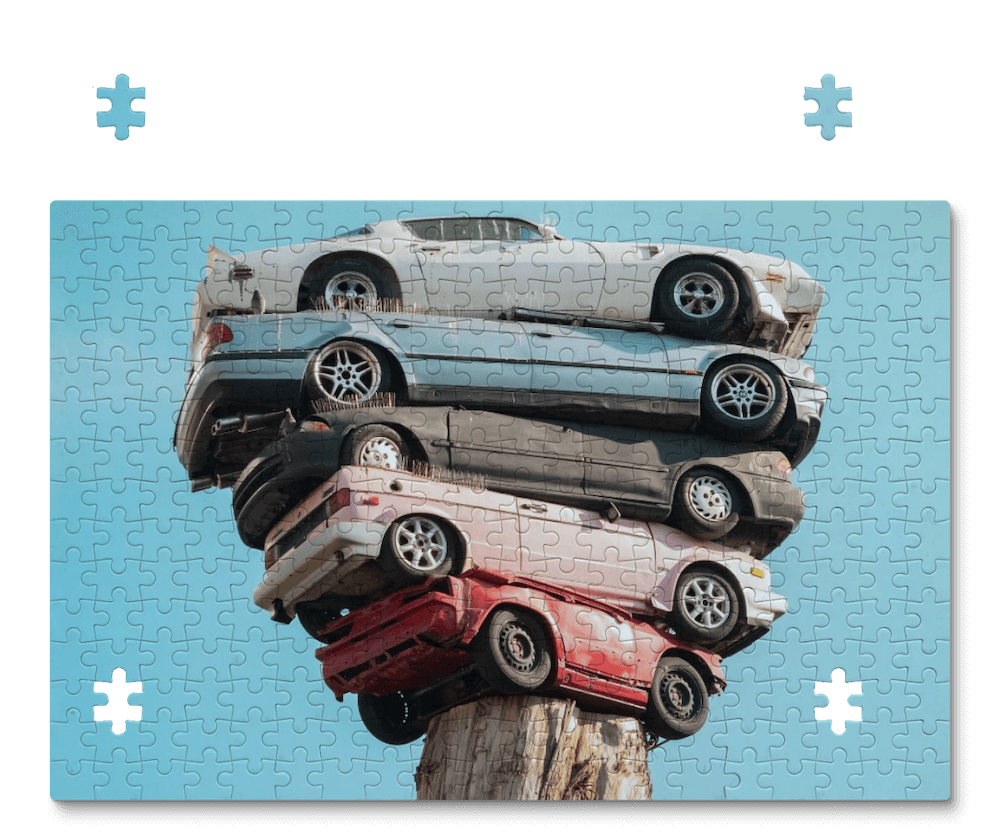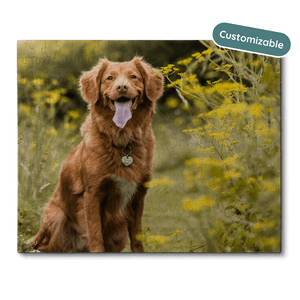Table of Contents
Have you ever wondered why some puzzles seem more enjoyable than others? The secret often lies in the design. Subtle tweaks in the design or layout can significantly impact both the difficulty and fun factor of a puzzle.
Selecting the ideal image for your puzzle is like finding the right book to read on a rainy day. It determines the level of challenge, the engagement, and ultimately, the satisfaction derived from completing the puzzle. But striking a balance is key - a good puzzle requires some mental rigor but doesn’t suck the fun out of the activity.
🔑 Key factors to consider
When it comes to designing a great puzzle, there are several factors to consider:
Detail level
The level of detail in your puzzle can make a big difference. Ideally, each piece should have enough detail to be distinct from others but not so obvious that pieces are placed easily. It’s about finding that sweet spot where there’s just enough challenge to keep things interesting.
For instance, consider the below puzzles. The intricate details of the image increase the level of difficulty - while the one with the rocket has more easily defined objects (such as the shuttle, the ground, and the water tower), which can be taken on separately, if needed.

 More detailed = more difficult
More detailed = more difficult

 Distinct objects = more enjoyable
Distinct objects = more enjoyable
Uniform colors
Large spaces with uniform colors can significantly up the difficulty level. While this can be good for those seeking a challenge, it should be used in moderation.
In the below puzzle, if more blue sky was shown, it would be more difficult, and if less was shown, it would likely be easier. The key is to strike a balance between uniform and varied colors.

 Lots of uniform color = more difficult
Lots of uniform color = more difficult

 Less uniform color = more enjoyable
Less uniform color = more enjoyable
Puzzle piece shapes
The shape of your puzzle pieces also plays a role in the overall difficulty. If all pieces were a uniform color and shape (called a "ribbon cut"), this could not only be difficult but potentially tedious as very similar pieces could seem like they fit in the wrong place.
At Puzzery, we use a variety of shapes to ensure that each piece has it's own home 💚

 Ribbon cut pieces = more difficult
Ribbon cut pieces = more difficult

 Random cut pieces = more enjoyable
Random cut pieces = more enjoyable
Image composition
Finally, consider how your image is composed. For example, having distinctive items around the edge of your design can give puzzlers a great start and a strong foundation.
For example, in the below puzzle, we included some distinctive pieces near the edge to make it easier for puzzlers to find and identify where they go. For hardcore puzzlers who solve puzzles without referencing the box, this can be nice touch.

 Distinct edge pieces can help make a puzzle more enjoyable
Distinct edge pieces can help make a puzzle more enjoyable
🔎 Discovering the perfect image
Now that we’ve explored the importance of image composition and how it can affect your puzzle-solving experience, let’s tackle the next big question - where can you find the perfect image for your custom puzzle?
The challenge of choosing an image
Selecting an image for your puzzle is like finding the right book to read on a rainy day. It sets the tone and can significantly enhance the experience. But what if you’re not sure what image to use? Or maybe you’re looking for something a little different than the usual family photo or pet portrait. You’re not alone. We’ve all been there, and that’s why I’ve got something special for you.
The world of royalty-free images
In the world of digital art, “royalty-free” is a term that refers to a type of license that allows you to use an image without having to pay royalties or license fees each time you use it. This means you can legally print these images on your puzzles without any worries.
There are hundreds of sites that offer royalty-free images, but today, I’ll walk you through five of my favorites:

Unsplash
Unsplash is a treasure trove of high-quality images from professional photographers around the world. Perfect for landscapes, animals, and everything in between.

Pexels
Pexels offers free stock photos and videos across a wide range of categories. Its large database includes everything from foggy forests to color-specific galleries.

Pixabay
Pixabay hosts free images for personal and commercial use. It was one of the first royalty-free sites to emerge and offers a vast array of fun designs and patterns.

Burst
Burst is Shopify's royalty-free image library. This site is best for lifestyle photos, and close up images.

Canva
Canva is always a great place to check. You can download templates or use their design tools to create your own.

Bonus option ✨
Still not sure? Check your camera roll. For example, did you know that over 70% of the puzzles we print here at Puzzery have pets on them?
Did you know that over 70% of the puzzles we print here at Puzzery have pets on them? That’s right, pets often are the go-to puzzle design for puzzle lovers.
🪜 Next steps
Overall, the art of puzzle design is a fascinating journey that combines creativity, strategy, and a deep understanding of what makes a puzzle enjoyable. Keep some of these details in mind when selecting an image, and your custom puzzle is sure to be a hit. So whether you’re designing a puzzle for yourself or as a gift for someone special, we hope this guide inspires you to create something truly unique.
Happy puzzling! 🧩

About the author
An environmentally conscious entrepreneur and a proud girl dad, Jordan started Puzzery to craft heartfelt puzzles that are responsibly made, high-quality, and affordable.
Frequently asked questions
Where can you find royalty-free images for custom puzzles?
Where can you find royalty-free images for custom puzzles?
What are the benefits of doing puzzles?
What are the benefits of doing puzzles?
Puzzles improve memory, enhance problem-solving skills, reduce stress, and increase dopamine production. One of the biggest advantages about jigsaw puzzles is that they're good for any age; jigsaw puzzles help build cognitive function when we're young, and continue maintain it as we grow older.
Where do you ship to?
Where do you ship to?
Our facility is based in Colorado, USA and we ship to contiguous USA and Hawaii.
We are actively working to also open facilities in Europe and in Canada.
🔔 Subscribe to be notified when new regions launch
Ready to create your own custom puzzle?
Try our puzzle designerRelated product

Custom jigsaw puzzle
 (100+)
(100+)



